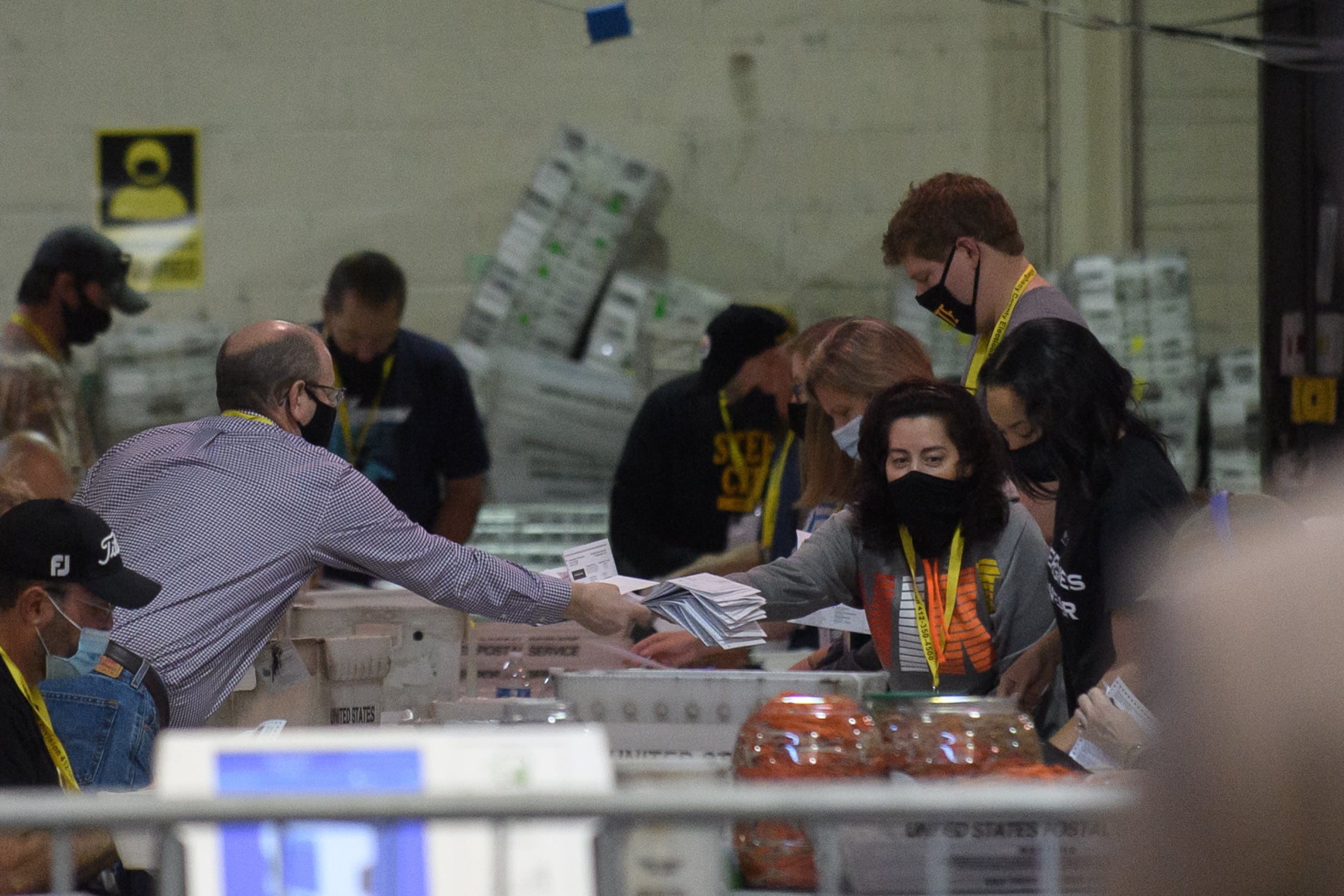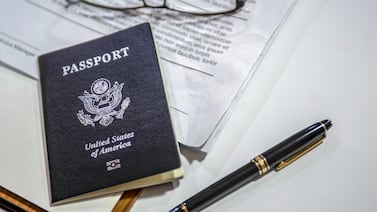The rush to count hundreds of thousands of mail ballots in Pennsylvania won’t kick off until 7 a.m. on Election Day — or, in some counties, even later.
Considering voters requested 908,903 ballots for the May 17 primary — which are now flooding back to election offices by the thousands every day — that constraint means it’s uncertain how complete the results will be on election night in critical races for governor, U.S. senator, and other key positions.
Contributing to any hold-up would again be the election’s lack of pre-canvassing, the ability for workers to open and process mail ballots before Election Day and thus speed up their counting work. Three years after instituting vote by mail, Pennsylvania is one of a minority of states that don’t allow pre-canvassing of their mail ballots, in contrast with 37 states that do.
Acting Secretary of State Leigh Chapman says the restriction in Pennsylvania’s vote-by-mail law is an across-the-board challenge for local election officials.
“One thing that all county election officials in Pennsylvania agree with is the need for pre-canvassing when it comes to vote by mail ballots,” Chapman said at a recent press conference. “You know, states like Florida report their results on election night. In Pennsylvania it takes days.”
After Pennsylvania passed Act 77 in 2019, Pennsylvania’s voters proved glad to have the option to vote from home via mail ballots during the COVID-19 pandemic. In the November 2020 election, more than 2.6 million voters opted to vote by mail.
But the pre-canvassing restrictions forced election officials to decide whether to attempt to count in-person votes and mail-in votes on the same day, or to push the mail ballot counting to later.
Election Day is “already a day where there’s a lot of stress and a lot of work going on,” Chapman said.
Each county follows its own plan for handling its mail-in and absentee ballots. Votebeat sent surveys to election officials in all 67 counties about the timing of their counting efforts this year. Of the 20 counties that responded, around three-quarters of them plan to start their count at 7 a.m. on Election Day.
Some counties have different plans. Mercer County, in the western part of the commonwealth, won’t begin counting its mail ballots until the day after Election Day, said Thad Hall, that county’s director of elections. They count their mail-in ballots at the same time as they count their military and absentee ballots, he said. Berks County, north of Philadelphia, plans to do the same.
Lackawanna County intends to start at 7:30 am opening the returned ballots from a total 15,439 requested. Although they won’t be separated from their envelopes and scanned before 1:30 pm, the county anticipates finishing the count by 6, said Elizabeth Hopkins, the county’s elections director.
Jefferson County has only had 1,671 mail-in ballot requests for the primary, so all ballots that are returned by Election Day should be counted by noon, officials said.
In Philadelphia, where 104,465 mail-in ballots were requested, temporary workers augment the ranks of the city workers assigned to count the ballots, said City Commissioner Seth Bluestein.
“The workers come in and we train them,” he said. “Some of them come back every year and we train them again. The more people you have, the faster you can count.”
The long, step-by-step process of counting mail ballots
Here’s how those workers count mail ballots in Philadelphia, a process that resembles the counting in many other large Pennsylvania counties, with variations depending on the available equipment and staffing, as well as the sheer number of ballots.
On Election Day, all ballots received by mail are brought into the counting room from a secure location. They are reviewed to make sure that each voter has dated and signed the outer mailing envelope, said Lisa Deeley, chair of the Philadelphia City Commissioners, the body charged with counting the city’s votes.
The envelopes are then put through an extractor machine, which removes the inner secrecy envelope from the outer envelope. The secrecy envelope, which contains the actual ballot, is opened, and the ballot is taken out. Once removed, these ballots are put in a tray and taken into another area where they’re unfolded, sent to yet another area, and finally scanned by another machine that then tabulates them.
The fate of ballots that aren’t enclosed in a privacy envelope, so-called “naked” ballots, depends on when they’re discovered. If the envelope the ballot is enclosed in doesn’t look thick enough, or if the privacy window from the outside envelope shows the ballot itself, it is considered “naked.”
If the fault is discovered prior to counting, election workers in Philadelphia, among other counties, notify the voter via email and give the option of applying for another ballot. But if the naked ballot isn’t discovered until counting begins, the voter is notified that their vote had to be discarded.
“It is a very long process,” Deeley said. “It’s like making a cake. We start at the bottom and build layer upon layer. When all of the layers are complete, we can actually show the voters numbers.”
After the polls close at 8 pm, the results from the mail ballots that have been counted up to that point will be reported alongside the in-person votes, Deeley said.
True solution remains out of reach
While election officials take steps such as hiring temp agencies to help count ballots, expanding facilities to accommodate more powerful machines, and training more people to move things along, what they say would really make counting smoother and faster is the ability to pre-canvass mail ballots.
Pre-canvassing also, many election officials believe, would help prevent the kind of distrust that flourished in 2020, when the delay in counting mail-in ballots contributed to Pennsylvania becoming a focus of the Trump campaign’s baseless claims of a rigged election.
Forced to wait to start their mail-ballot processing on Election Day, many counties, particularly larger ones like Philadelphia, weren’t able to finish counting by that night. In fact, Philadelphia’s counting took four more days. Spurred on by the Trump campaign’s allegations, protestors descended on counting centers and election boards demanding that they “Stop the Steal” and halt the counting of what they inaccurately characterized as illegitimate ballots.
In 2021, State Rep. Seth Grove, the Republican chair of the State Government Committee, proposed a bill that would give election officials five days for pre-canvassing mail-in ballots. The bill passed both chambers, but because it also included unrelated provisions, including a new voter ID law, Democratic Gov. Tom Wolf vetoed it.
The proposal hasn’t come up again in the legislature since, either as a standalone bill or in a new package of election legislation. Grove says Republicans won’t be trying again until Wolf’s term as governor is over.





